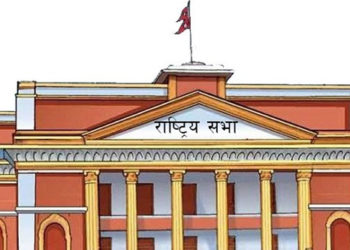Economists have long argued that regulation alone cannot bring about the reduction in global greenhouse-gas emissions that is needed to curb climate change; a carbon price is also essential.
So far, dozens of carbon-pricing arrangements, mostly tax-based schemes, have been implemented around the world. But, when it comes to impact, the devil is in the details.
The US Inflation Reduction Act, passed last year, highlighted just how complicated carbon pricing can be. The IRA includes a little-noticed subsidy of $85 per ton of carbon dioxide captured from industrial processes, paid to any new facility for 12 years. Whether the provision will lead to a significant reduction in emissions is impossible to predict. What can be expected is a test of the viability of carbon capture and storage (CSS) technology.
As it stands, only a few industrial CCS facilities exist globally, and they remove only small amounts of CO2. While the potential cost of CCS varies widely, many estimates put it below $85 per ton. The guarantee of a generous subsidy, which investors can count on for a long period, could thus give the sector a major boost.
But whether or not the CCS subsidy proves successful is a secondary consideration. More important is the fact that it establishes a de facto carbon price for US industry. If a steel plant, for example, begins employing CCS, it would receive $85 for every ton of carbon no longer emitted.
A steel plant that cuts production, thereby reducing its CO2 emissions, loses its free allowances, destroying the incentive to reduce emissions. It should not be surprising that industrial emissions have fallen little in Europe since the ETS began operating almost two decades ago.
The European Union relies on a very different carbon-pricing model. The European Emissions Trading System – the world’s first, and largest, carbon market – employs a cap-and-trade approach.
The ETS effectively establishes a carbon price by forcing companies to acquire enough permits, or “allowances,” to cover their CO2 emissions. A certain amount of free permits are doled out, and firms must purchase additional permits on the market.
Imagine two identical steel plants, one in the United States, the other in the EU. Both would face, in principle, the same marginal incentive to reduce emissions. The European steel plant that reduces its emissions would need fewer permits, which it could sell to higher emitters at the market price – a price that, at €80 ($86) per ton, is currently almost exactly the same as that created by the American CCS subsidy.
If the EU plant receives its allowances for free, the financial situation would be exactly the same on both sides of the Atlantic. The extra money would simply be coming from different sources: the federal government (for the US plant) or those who buy surplus ETS certificates (for the EU plant).
But this does not mean that we have achieved transatlantic carbon-pricing harmony, owing to the way the EU approach works in reality.
A key feature of the ETS is that it treats the power sector and industry very differently. Power stations get few allowances for free, and have to buy the rest on the market. Industry, by contrast, gets all the allowances it needs for free.
A steel plant that cuts production, thereby reducing its CO2 emissions, loses its free allowances, destroying the incentive to reduce emissions. It should not be surprising that industrial emissions have fallen little in Europe since the ETS began operating almost two decades ago.
So, while US industry now faces a kind of carbon price, EU industry still does not. And this will not change any time soon: the EU plans to continue providing most of industry’s allowances for free until 2030.
Yet Europe continues touting the ETS, with its make-believe carbon price for industry, partly to avoid a politically awkward situation: if the EU attached no strings to its free emissions allowances, companies would close their plants and sell their allowances, realizing hefty profits.
It is difficult to say which approach is better for the climate, but it is easy to foresee major trade and political frictions resulting from these opposing choices.
The EU also knows that simply cutting local carbon-intensive production would do little good for the climate, because the same goods would then be imported from outside the bloc.
To prevent this so-called carbon leakage, the EU is now planning to introduce a controversial “carbon border adjustment mechanism” (CBAM), under which importers would have to buy ETS certificates equivalent to imported products’ carbon content.
The current plan is that, as the CBAM gradually comes into force – between 2026 and 2034 – free allowances for industry will be incrementally eliminated.
Since the CBAM will apply only to imports from countries that do not have a carbon price, and the US now effectively has a carbon price, US products should be exempt, averting potentially significant transatlantic friction.
But another problem soon arises: once EU industry no longer receives free allowances, producers of carbon-intensive products would have an incentive to shift production to the US, where the government covers decarbonization costs.
EU political leaders will then face the difficult choice between continuing free allowances and applying the CBAM to the US anyway.
The CBAM can be justified under World Trade Organization rules, because its purpose is not to protect domestic industry, but to advance a global good by extending the EU’s carbon price to imports. But applying the CBAM, including to countries like the US, while maintaining free allowances to EU industry, would clearly protect European industry. This would be very difficult to justify under WTO rules.
The overall lesson is that different approaches to carbon pricing for industry have very different implications. For now, the US has gone with carrots, while the EU has focused on sticks.
It is difficult to say which approach is better for the climate, but it is easy to foresee major trade and political frictions resulting from these opposing choices.
(Daniel Gros is Director of the Institute for European Policy-Making at Bocconi University)
Copyright: Project Syndicate









Comment